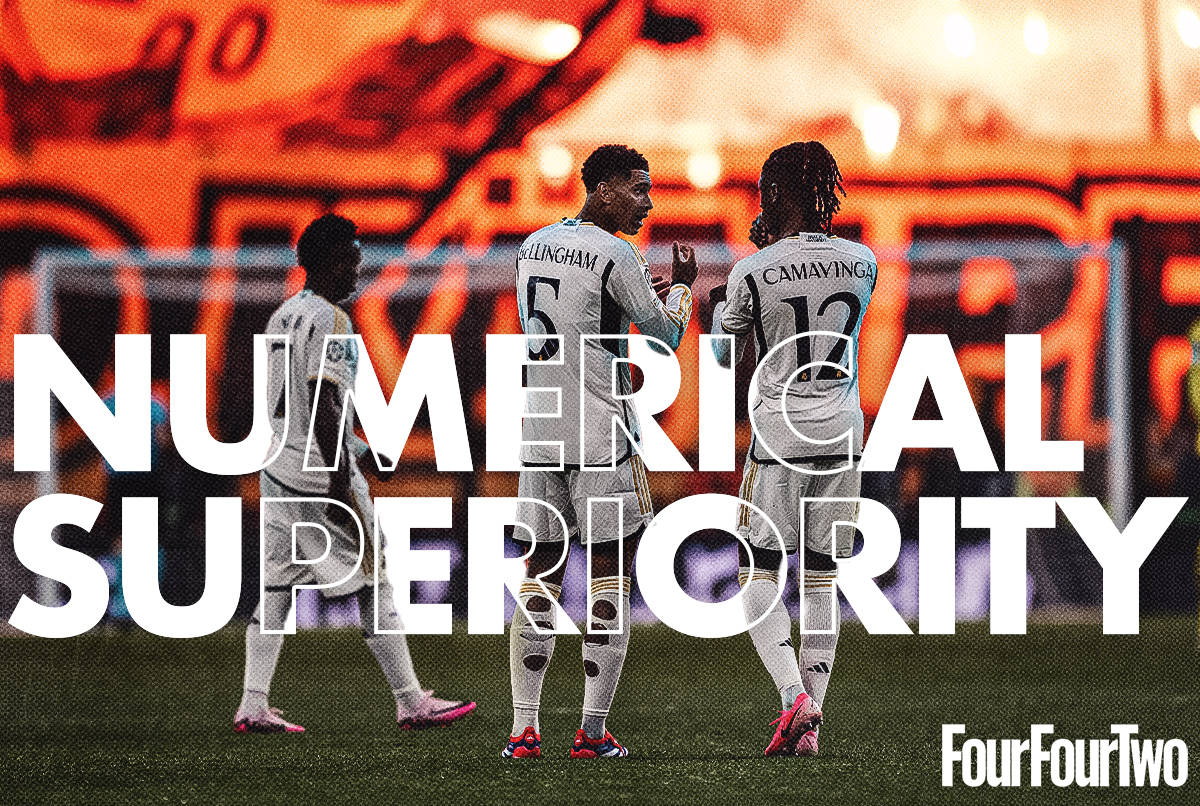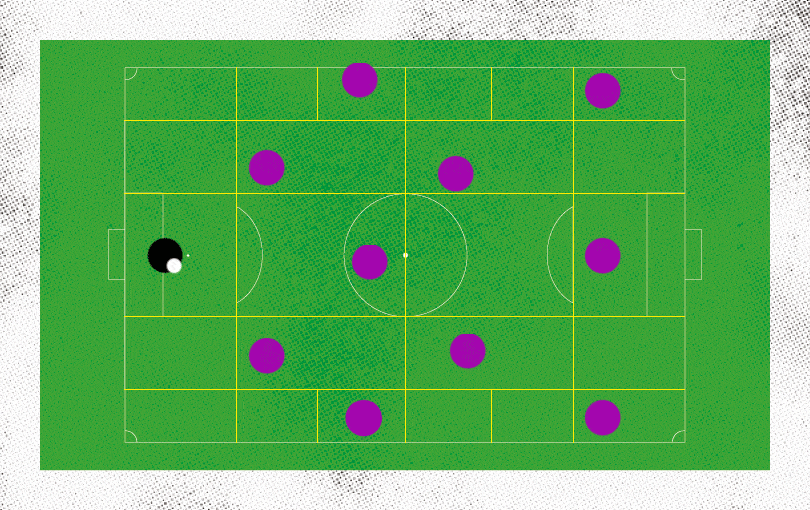
Numerical superiority is key for all teams. We’ve all watched or played football when you can feel one of the two sides has run out of gas.
Inevitably, that team ends up without the ball, dejected and hopeless: chasing shadows. Like a boxer on the ropes or being match point down in tennis, this is the point from where few return. But how can some teams often run others into the ground like this?
The answer may lie somewhere in the theory of numerical superiority, which we at FourFourTwo can explain to you. Here’s your rundown on a key battleground of modern football and a football term that pops up every weekend.
What is numerical superiority?
Numerical superiority is the term used when a team has an overload in one area of the pitch.
For example, if team A had possession down the left flank with three players in close proximity, and team B only had two players in that area trying to regain the ball, team A would have numerical superiority.
In the clip above, the team in orange manufacture a move in which the left-back, left-winger, left-sided central midfielder and centre-forward create an overload on the left flank – giving them numerical superiority over the opposition.
Essentially, it means one team has an advantage over the other purely down to numbers in one area of the pitch. This is as opposed to qualitative superiority, which is when a player considered superior to their individual opponent isolates them in a one-on-one situation.
A team could also gain superiority through positional play. Positional superiority over their opposition involves getting players into positions between the lines or behind their defensive lines.
If a team can achieve all of these advantages consistently throughout a match, goalscoring opportunities are almost certain.
Which teams use numerical superiority to their advantage?

Pretty much every side that plays a possession-oriented game will be looking to achieve numerical superiority in one area of the pitch or another, whether they use a false nine to link with the midfield or the no.10 drops into similar spaces to a no.8. Otherwise, you can end up with possession without any real purpose and struggle to break down a compact and well-organised low block.
If you watch the best possession-based teams closely, they will nearly always look to be targeting one specific area of the pitch. The key is finding that numerical superiority where the opposition may have a perceived weakness – or leaving space elsewhere for a spare man to exploit.

Pep Guardiola – and Johan Cruyff before him – have implemented principles known as ‘Juego de Posicion’. Translated simply as positional play, Guardiola splits the pitch into specific zones and asks for no more than two players on the same vertical plane and three on a vertical plane – as you can see above, with examples of how players interchange, find space and overload specific zones. Other managers, such as Fernando Diniz meanwhile, play a style referred to as ‘relationism’: the idea that players have no set shape on the ball and instead play according to where their team-mates are. Both styles enable teams to create numerical superiority in different ways.
It is not always easy to achieve. But like so many other things in football, and life, Pep Guardiola makes it look easy. His Manchester City side are constantly able to find numerical superiority against their opponents.
They do this from the very first phase of play. The no.6, often Rodri, will drop between the two centre-backs, who move wide to create a triangle. As very few teams go man-to-man against City, this naturally creates an overload.
Pep also introduced the regular use of inverted full-backs to create numerical superiority and a box midfield in the centre of the pitch. One of Guardiola’s successors at Barcelona, Luis Enrique had his Treble-winning team of 2014/15 also become experts in numerical superiority.
In the semi-final win over Bayern Lionel Messi and Neymar often played extremely deep to link with the midfield and outnumber Bayern in the middle of the pitch, helped by superbly energetic performances from full-backs Dani Alves and Jordi Alba, who patrolled the flanks.
Ange Postecoglou’s teams, particularly his Celtic side, have focus edheavily on creating numerical superiority. Like big Ange said himself after his Tottenham team beat Bournemouth early in his tenure, “I’m just copying Pep mate.”
It was firmly tongue-in-cheek. But if there’s one area Postecoglou’s teams do look similar to City, it is their ability to create numerical overloads.
What are pros and cons of numerical superiority?

When you have a team full of excellent technical footballers, it is difficult to see a downside to targeting numerical superiority.
But to be implemented properly, you do need highly intelligent footballers, with a real understanding of positional play and how to alter their approach during the game. At the highest level, not everyone can do this.
There is also the wider issue of having such a disciplined approach to attacking play. Naturally, this narrows the space for creative players to exploit, players instead acting more as pawns in a chess set.
More teams adopting a rigid focus on numerical and positional superiority perhaps results in less room for individual flair players who like to drift around the pitch.







